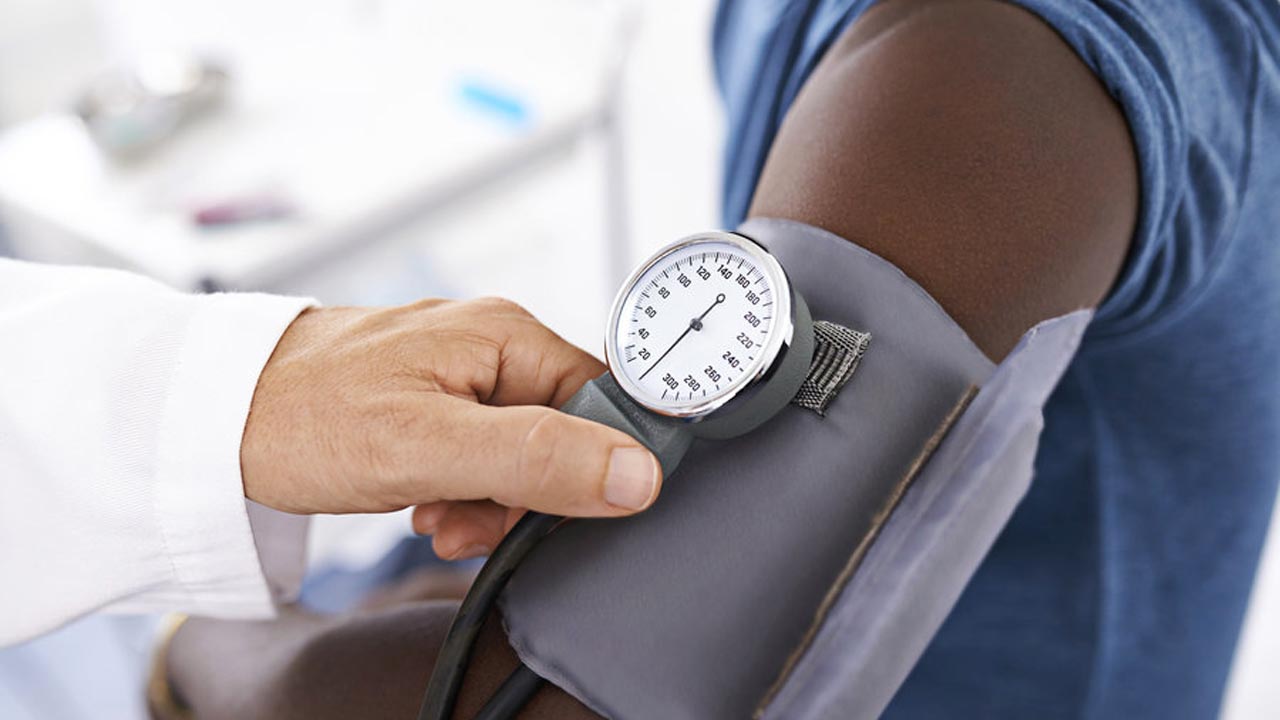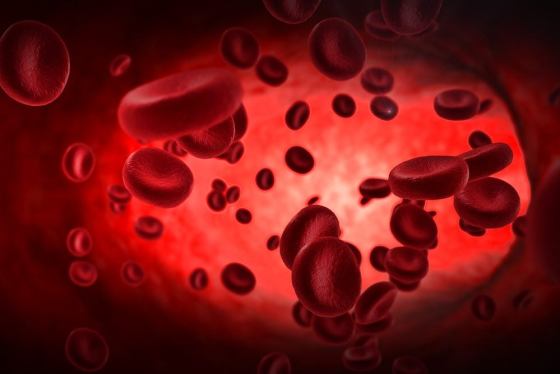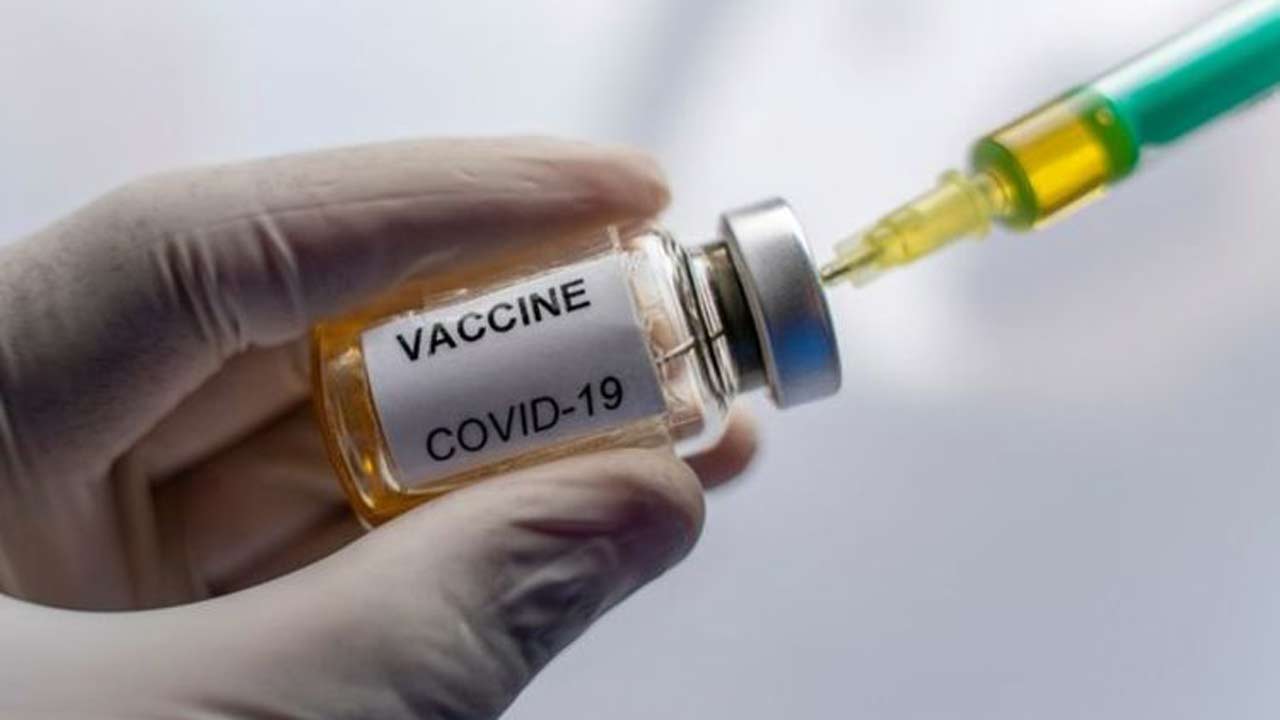The American Heart Association recently released a publication "Guidelines HIghlights" which summarizes the key issues and changes in the 2015 AHA Guidelines update for Cardiopulmonary Resuscitation (CPR) and Emergency Cardiovascular Care (ECC). It has been developed for resuscitation providers and for AHA instructors to focus on the resuscitation science and guidelines recommendations that are most significant or controversial or those that will result in changes in resuscitation practice or resuscitation training
The 2015 AHA Guidelines Update for CPR and ECC is based on an international evidence evaluation process that involved 250 evidence reviewers from 39 countries. I wouldnt want to bore you with so much details so i would try as much as possible to highlight these new guidelines using the nursingworldnigeria.com platform.
Adult Basic Life Support and CPR Quality: HCP BLS Summary of Key Issues and Major Changes
Key issues and major changes in the 2015 Guidelines Update recommendations for HCPs include the following:
• These recommendations allow flexibility for activation of the emergency response system to better match the HCP’s clinical setting.
• Trained rescuers are encouraged to simultaneously perform some steps (ie, checking for breathing and pulse at the same time), in an effort to reduce the time to first chest compression.
• Integrated teams of highly trained rescuers may use a choreographed approach that accomplishes multiple steps and assessments simultaneously rather than the sequential manner used by individual rescuers (eg, one rescuer activates the emergency response system while another begins chest compressions, a third either provides ventilation or retrieves the bag-mask device for rescue breaths, and a fourth retrieves and sets up a defibrillator).
• Increased emphasis has been placed on high-quality CPR using performance targets (compressions of adequate rate and depth, allowing complete chest recoil between compressions, minimizing interruptions in compressions, and avoiding excessive ventilation).
• Compression rate is modified to a range of 100 to 120/min.
• Compression depth for adults is modified to at least 2 inches (5cm) but should not exceed 2.4 inches (6 cm).
• To allow full chest wall recoil after each compression, rescuers must avoid leaning on the chest between compressions.
• Criteria for minimizing interruptions is clarified with a goal of chest compression fraction as high as possible, with a target of at least 60%.
• Where EMS systems have adopted bundles of care involving continuous chest compressions, the use of passive ventilation techniques may be considered as part of that bundle for victims of OHCA.
• For patients with ongoing CPR and an advanced airway in place, a simplified ventilation rate of 1 breath every 6 seconds (10 breaths per minute) is recommended.
These changes are designed to simplify training for HCPs and to continue to emphasize the need to provide early and high-quality CPR for victims of cardiac arrest.
Immediate Recognition and Activation of Emergency Response System
 2015 (Updated): HCPs must call for nearby help upon finding the victim unresponsive, but it would be practical for an HCP to continue to assess the breathing and pulse simultaneously before fully activating the emergency response system (or calling for backup).
2015 (Updated): HCPs must call for nearby help upon finding the victim unresponsive, but it would be practical for an HCP to continue to assess the breathing and pulse simultaneously before fully activating the emergency response system (or calling for backup). 2010 (Old): The HCP should check for response while looking at the patient to determine if breathing is absent or not normal.
Why: The intent of the recommendation change is to minimize delay and to encourage fast, efficient simultaneous assessment and response, rather than a slow, methodical, step-by-step approach.
Emphasis on Chest Compressions*
2015 (Updated): It is reasonable for HCPs to provide chest compressions and ventilation for all adult patients in cardiac arrest, whether from a cardiac or noncardiac cause. Moreover, it is realistic for HCPs to tailor the sequence of rescue actions to the most likely cause of arrest.
2010 (Old): It is reasonable for both EMS and in-hospital professional rescuers to provide chest compressions and rescue breaths for cardiac arrest victims.
Why: Compression-only CPR is recommended for untrained rescuers because it is relatively easy for dispatchers to guide with telephone instructions. It is expected that HCPs are trained in CPR and can effectively perform both compressions and ventilation. However, the priority for the provider, especially if acting alone, should still be to activate the emergency response system and to provide chest compressions. There may be circumstances that warrant a
change of sequence, such as the availability of an AED that the provider can quickly retrieve and use.
Shock First vs CPR First
2015 (Updated): For witnessed adult cardiac arrest when an AED is immediately available, it is reasonable that the defibrillator be used as soon as possible. For adults with unmonitored cardiac arrest or for whom an AED is not immediately available, it is reasonable that CPR be initiated while the defibrillator equipment is being retrieved and applied and that defibrillation, if indicated, be attempted as soon as the device is ready for use.
2010 (Old): When any rescuer witnesses an out-of-hospital arrest and an AED is immediately available on-site, the rescuer should start CPR with chest compressions and use the AED as soon as possible. HCPs who treat cardiac arrest in hospitals and other facilities with on-site AEDs or defibrillators should
provide immediate CPR and should use the AED/defibrillator as soon as it is available. These recommendations are designed to support early CPR and early defibrillation, particularly when an AED or defibrillator is available within moments of the onset of sudden cardiac arrest. When an OHCA is not witnessed by EMS personnel, EMS may initiate CPR while checking the rhythm with the AED or on the electrocardiogram (ECG) and preparing for defibrillation. In such instances, 1½ to 3 minutes of CPR may be considered before attempted defibrillation.
Whenever 2 or more rescuers are present, CPR should be provided while the defibrillator is retrieved. With in-hospital sudden cardiac arrest, there is insufficient evidence to support or refute CPR before defibrillation. However, in monitored patients, the time from ventricular fibrillation (VF) to shock delivery should be under 3 minutes, and CPR should be performed while the defibrillator is readied.
Why: While numerous studies have addressed the question of whether a benefit is conferred by providing a specified period (typically 1½ to 3 minutes) of chest compressions before shock delivery, as compared with delivering a shock as soon as the AED can be readied, no difference in outcome has been shown. CPR should be provided while the AED pads are applied and until the AED is ready to analyze the rhythm.
Chest Compression Rate: 100 to 120/min*
2015 (Updated): In adult victims of cardiac arrest, it is reasonable for rescuers to perform chest compressions at a rate of 100 to 120/min.
2010 (Old): It is reasonable for lay rescuers and HCPs to perform chest compressions at a rate of at least 100/min.
Why: The minimum recommended compression rate remains 100/min. The upper limit rate of 120/min has been added because 1 large registry series suggested that as the compression rate increases to more than 120/min, compression depth decreases in a dose-dependent manner. For example, the proportion of compressions of inadequate depth was about 35% for a compression rate of 100 to 119/min but increased to inadequate depth in 50% of compressions when the compression rate was 120 to 139/min and to inadequate depth in 70% of compressions when compression rate was more than 140/min.
Chest Compression Depth*
2015 (Updated): During manual CPR, rescuers should perform chest compressions to a depth of at least 2 inches (5 cm) for an average adult while avoiding excessive chest compression depths (greater than 2.4 inches [6 cm]).
2010 (Old): The adult sternum should be depressed at least 2 inches (5 cm).
Why: A compression depth of approximately 5 cm is associated with greater likelihood of favorable outcomes compared with shallower compressions. While there is less evidence about whether there is an upper threshold beyond which compressions may be too deep, a recent very small study suggests potential injuries (none life-threatening) from excessive chest compression depth (greater than 2.4 inches [6 cm]). Compression depth may be difficult to judge without
use of feedback devices, and identification of upper limits of compression depth may be challenging. It is important for rescuers to know that chest compression depth is more often too shallow than too deep.
Chest Recoil*
2015 (Updated): It is reasonable for rescuers to avoid leaning on the chest between compressions, to allow full chest wall recoil for adults in cardiac arrest.
2010 (Old): Rescuers should allow complete recoil of the chest after each compression, to allow the heart to fill completely before the next compression.
Why: Full chest wall recoil occurs when the sternum returns to its natural or neutral position during the decompression phase of CPR. Chest wall recoil creates a relative negative intrathoracic pressure that promotes venous return and cardiopulmonary blood flow. Leaning on the chest wall between compressions precludes full chest wall recoil. Incomplete recoil raises intrathoracic pressure and reduces venous return, coronary perfusion pressure, and myocardial
blood flow and can influence resuscitation outcomes.
Minimizing Interruptions in Chest Compressions*
2015 (Reaffirmation of 2010): Rescuers should attempt to minimize the frequency and duration of interruptions in compressions to maximize the number of compressions delivered per minute.
2015 (New): For adults in cardiac arrest who receive CPR without an advanced airway, it may be reasonable to perform CPR with the goal of a chest compression fraction as high as possible, with a target of at least 60%.
Why: Interruptions in chest compressions can be intended as part of required care (ie, rhythm analysis and ventilation) or unintended (ie, rescuer distraction). Chest compression fraction is a measurement of the proportion of total resuscitation time that compressions are performed. An increase in chest compression fraction can be achieved by minimizing pauses in chest compressions. The optimal goal for chest compression fraction has not been defined. The addition of a target compression fraction is intended to limit interruptions in compressions and to maximize coronary perfusion and blood flow during CPR.
Comparison of Key Elements of Adult, Child, and Infant BLS
Chest Compression Feedback
2015 (Updated): It may be reasonable to use audiovisual feedback devices during CPR for real-time optimization of CPR performance.
2010 (Old): New CPR prompt and feedback devices may be useful for training rescuers and as part of an overall strategy to improve the quality of CPR in actual resuscitations. Training for the complex combination of skills required to perform adequate chest compressions should focus on demonstrating mastery.
Why: Technology allows for real-time monitoring, recording, and feedback about CPR quality, including both physiologic patient parameters and rescuer performance metrics. These important data can be used in real time during resuscitation, for debriefing after resuscitation, and for system-wide quality improvement programs. Maintaining focus during CPR on the characteristics of compression rate and depth and chest recoil while minimizing interruptions is a complex challenge even for highly trained professionals. There is some evidence that the use of CPR feedback may be effective in modifying chest compression rates that are too fast, and there is separate evidence that CPR feedback decreases the leaning force during chest compressions. However, studies to date have not demonstrated a significant improvement in favorable neurologic outcome or survival to hospital discharge with the use of CPR feedback devices during actual cardiac arrest events.
Delayed Ventilation
2015 (New): For witnessed OHCA with a shockable rhythm, it may be reasonable for EMS systems with prioritybased, multitiered response to delay positive-pressure ventilation (PPV) by using a strategy of up to 3 cycles of 200 continuous compressions with passive oxygen insufflation and airway adjuncts.
Why: Several EMS systems have tested a strategy of providing initial continuous chest compressions with delayed
PPV for adult victims of OHCA. In all of these EMS systems, the providers received additional training with emphasis on provision of high-quality chest compressions. Three studies in systems that use priority-based, multitiered response in both urban and rural communities, and provide a bundled package of care that includes up to 3 cycles of passive oxygen insufflation, airway adjunct insertion, and 200 continuous chest compressions with interposed shocks, showed improved survival with favorable neurologic status for victims with witnessed arrest or shockable rhythm.
Ventilation During CPR With an Advanced Airway
2015 (Updated): It may be reasonable for the provider to deliver 1 breath every 6 seconds (10 breaths per minute) while continuous chest compressions are being performed (ie, during CPR with an advanced airway).
2010 (Old): When an advanced airway (ie, endotracheal tube, Combitube, or laryngeal mask airway) is in place during 2-person CPR, give 1 breath every 6 to 8 seconds without attempting to synchronize breaths between compressions (this will result in delivery of 8 to 10 breaths per minute).
Why: This simple single rate for adults, children, and infants—rather than a range of breaths per minute—should
be easier to learn, remember, and perform.
Team Resuscitation: Basic Principles
2015 (New): For HCPs, the 2015 Guidelines Update allows flexibility for activation of the emergency response and subsequent management in order to better match the provider’s clinical setting (Figure 5).
Why: The steps in the BLS algorithms have traditionally been presented as a sequence in order to help a single
rescuer prioritize actions. However, there are several factors in any resuscitation (eg, type of arrest, location, whether trained providers are nearby, whether the rescuer must leave a victim to activate the emergency response system) that may require modifications in the BLS sequence.
The updated BLS HCP algorithms aim to communicate when and where flexibility in sequence is appropriate.
Alternative Techniques and Ancillary Devices for CPR
Summary of Key Issues and Major Changes Conventional CPR consisting of manual chest compressions interspersed with rescue breaths is inherently inefficient with respect to generating significant cardiac output. A variety
of alternatives and adjuncts to conventional CPR have been developed with the aim of enhancing cardiac output during resuscitation from cardiac arrest. Since the 2010 Guidelines were published, a number of clinical trials have provided new data on the effectiveness of these alternatives.
Compared with conventional CPR, many of these techniques and devices require specialized equipment and training. When rescuers or healthcare systems are considering implementation, it must be noted that some techniques and devices have been tested only in highly selected subgroups of cardiac arrest patients.
• The routine use of the impedance threshold device (ITD) as an adjunct to conventional CPR is not recommended.
• A recent randomized controlled trial suggests that the use of the ITD plus active compression-decompression CPR is associated with improved neurologically intact survival for patients with OHCA.
• The routine use of mechanical chest compression devices is not recommended, but special settings where this technology may be useful are identified.
• The use of ECPR may be considered for selected patients in settings where a reversible cause of cardiac arrest is suspected.
Impedance Threshold Devices
2015 (Updated): The routine use of the ITD as an adjunct during conventional CPR is not recommended. The combination of ITD with active compressiondecompression CPR may be a reasonable alternative to conventional CPR in settings with available equipment and properly trained personnel.
2010 (Old): The use of the ITD may be considered by trained personnel as a CPR adjunct in adult cardiac arrest.
Why: Two large randomized controlled trials have provided new information about the use of the ITD in OHCA. One large multicenter randomized clinical trial failed to demonstrate any improvement associated with the use of an ITD (compared with a sham device) as an adjunct to conventional CPR. Another clinical trial demonstrated a benefit with the use of active compression-decompression CPR plus an ITD when compared with conventional CPR and no ITD. However, confidence intervals around the primary outcome point estimate were very broad, and there is a high risk of bias on the basis of co-intervention (the group receiving active compression-decompression CPR plus the ITD also had CPR delivered using CPR quality feedback devices, while the control arm did not have the use of such feedback devices).
Mechanical Chest Compression Devices
2015 (Updated): The evidence does not demonstrate a benefit with the use of mechanical piston devices for chest compressions versus manual chest compressions in patients with cardiac arrest. Manual chest compressions remain the standard of care for the treatment of cardiac arrest. However, such a device may be a reasonable alternative to conventional CPR in specific settings where the delivery of high-quality manual compressions may be challenging or dangerous for the provider (eg, limited rescuers available, prolonged CPR, CPR during hypothermic cardiac arrest, CPR in a moving ambulance, CPR in the angiography suite, CPR during preparation for ECPR).
2010 (Old): Mechanical piston devices may be considered for use by properly trained personnel in specific settings for the treatment of adult cardiac arrest in circumstances (eg, during diagnostic and interventional procedures) that make manual resuscitation difficult. The load-distributing band may be considered for use by properly trained personnel in specific settings for the treatment of cardiac arrest.
Why: Three large randomized controlled trials comparing mechanical chest compression devices have not demonstrated improved outcomes for patients with OHCA when compared with manual chest compressions. For this
reason, manual chest compressions remain the standard of care.
Extracorporeal Techniques and Invasive Perfusion Devices
2015 (Updated): ECPR may be considered an alternative to conventional CPR for select patients who have a cardiac arrest and for whom the suspected etiology of the cardiac arrest is potentially reversible.
2010 (Old): There was insufficient evidence to recommend the routine use of ECPR for patients in cardiac arrest. However, in settings where ECPR is readily available, it may be considered when the time without blood flow is brief and the condition leading to the cardiac arrest is reversible (eg, accidental hypothermia, drug intoxication) or amenable to heart transplantation (eg, myocarditis) or revascularization (eg, acute myocardial infarction).
Why: The term extracorporeal CPR is used to describe the initiation of extracorporeal circulation and oxygenation during the resuscitation of a patient in cardiac arrest. ECPR involves the emergency cannulation of a large vein and artery (eg, femoral vessels). The goal of ECPR is to support patients in cardiac arrest while potentially reversible conditions are treated. ECPR is a complex process that requires a highly trained team, specialized equipment, and multidisciplinary support within the local healthcare system. There are no clinical trials on ECPR, and available published series have used rigorous inclusion and exclusion criteria to select
patients for ECPR. Although these inclusion criteria are highly variable, most included only patients aged 18 to 75 years with limited comorbidities, with arrest of cardiac origin, after conventional CPR for more than 10 minutes without ROSC. These inclusion criteria should be considered in a provider’s selection of potential candidates for ECPR.
CHAINS OF SURVIVAL:
Separate Chains of Survival have been recommended that identify the different pathways of care for patients who experience cardiac arrest in the hospital as distinct from out-of-hospital settings
USE OF SOCIAL MEDIA TO SUMMON RESCUERS:
It may be reasonable for communities to incorporate social media technologies that summon rescuers who are in close proximity to a victim of suspected OHCA and are willing and able to perform CPR.
Jude Chiedu is an Instructor with the American Heart Association and lead instructor at Nursingworld Nigeria Training Center, an ITO with the Resuscitation Council of Sourthern Africa.
ABUJA: Training Schedule for Basic Life Support BLS, Pediatric Advanced Life Support (PALS), Advanced Cardiovascular Life Support ACLS, First Aid, CPR, AED
PORTHARCOURT: Training Schedule for Basic Life Support BLS, Pediatric Advanced Life Support (PALS), Advanced Cardiovascular Life Support ACLS, First Aid, CPR, AED
LAGOS: Training Schedule for Basic Life Support BLS, Pediatric Advanced Life Support (PALS), Advanced Cardiovascular Life Support ACLS, First Aid, CPR, AED





